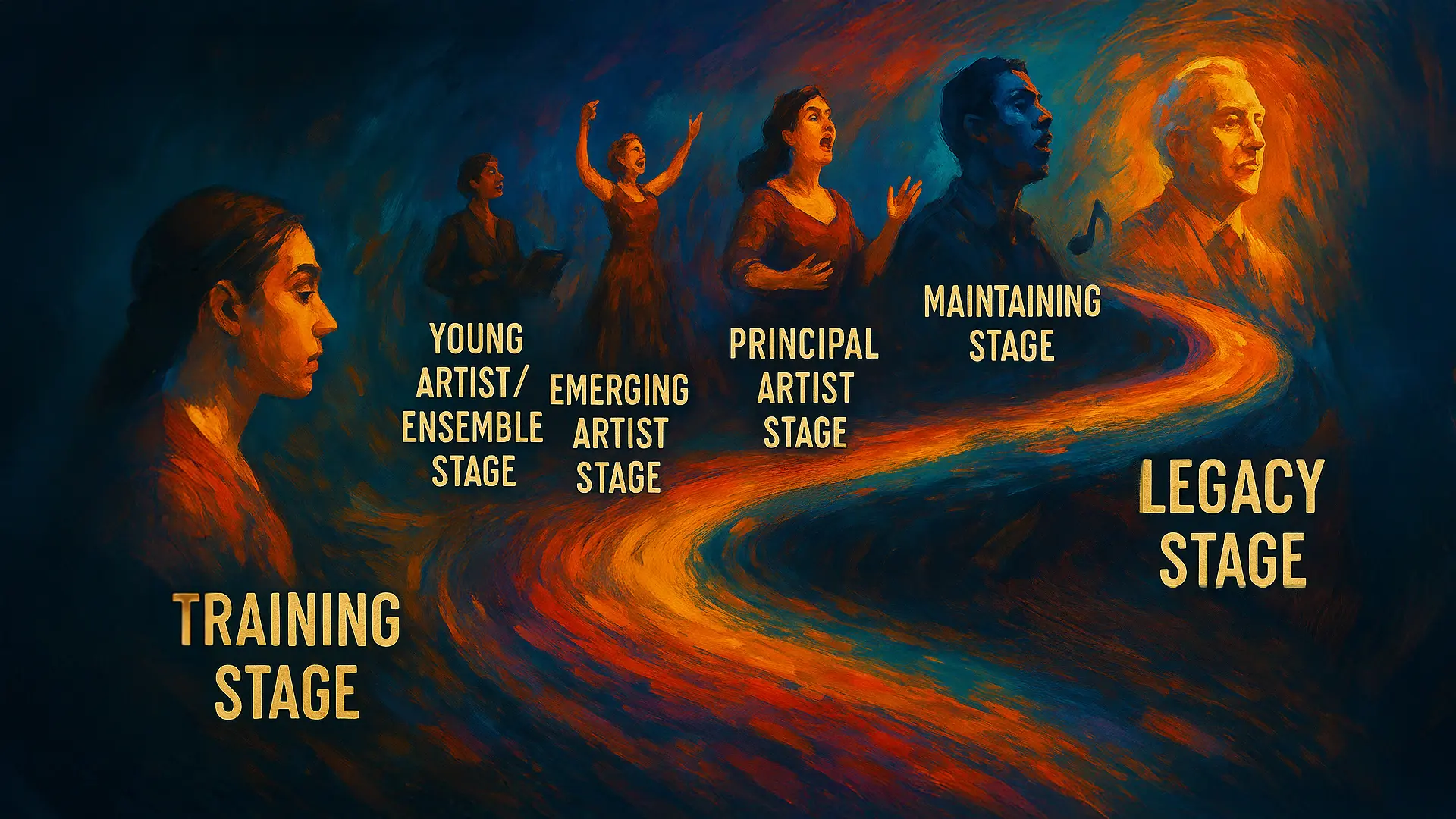
The Path of a Typical Professional Opera Singer





Before we get into our next blog episode, I’d like to thank Jack Swanson for his time and expertise in helping me update this copy. Especially on Stage 5, the Maintaining Stage. “Thank you, Jack!”
Carol Kirkpatrick created this list over twenty years ago. She had a couple of things in mind when she did. One was to give aspiring singers a visual context of a career path as an opera singer. And two, to illustrate the importance of your relationships as you walk that path.
While much has changed about this business, the basic stages of a singer's career have, for the most part, remained the same. However, the work necessary to advance through these stages has become more sophisticated and critical. Today, there are many more singers vying for far fewer opportunities. That said, nearly all opera singers will follow some version of these six stages in their career path.
As in many demanding professional careers, not everyone who begins this journey completes every stage. Many choose to leave this path for various reasons along the way. (On pages 247 -254 in Ariaready: The Busines of Singing, Carol goes in-depth on this important decision. And, no surprise, it’s more about the how than the decision itself.)
The career of a professional opera singer typically involves some version of these six stages. Remember, each stage is pivotal to your development and success.
These are the “What Happens Next” steps most singers take! Each stage offers valuable and essential learning that will assist you during the “Bridge” stages, your transition periods that occur as you progress to the next stage.
It will also inform you how your behavior might need to be adjusted in this new career identity stage as you move along your “Career Arc” from mentee to mentor.
Bridge Stage
Bridge Stage
Bridge Stage
Bridge Stage
Bridge Stage
These “Milestone Steps” represent the typical journey of a professional opera singer, from your early training to the peak of your artistic achievement and beyond, building both personal growth and a contribution to the opera community.
This matrix only shows the likely “What” path of a career. Knowing where you are and where you might expect to be as your career continues to grow helps you to stay focused. However, it rarely informs or shows the “How” necessary to prepare for that next stage.
You’ll want to create relationships that support you from below (the stage you are currently in) as well as ones that reach down (from the stage you aspire to) to help you from above. And I haven’t even mentioned all the relationships you will need to develop from adjacent fields or even those outside the world of singing.
Creating or getting an opportunity to “step up” is of little value if you’re not prepared to be there.
This is where the AriaReady process comes into play. Much of your learning, practice, and honing comes during the stage you’re currently in. But it’s during these “Bridge Stages” where your work proves its worth!
Owning these tools and skills shows you are ready, prepared, and confident. It shows others and yourself that you belong there!
"Avanti!"
David